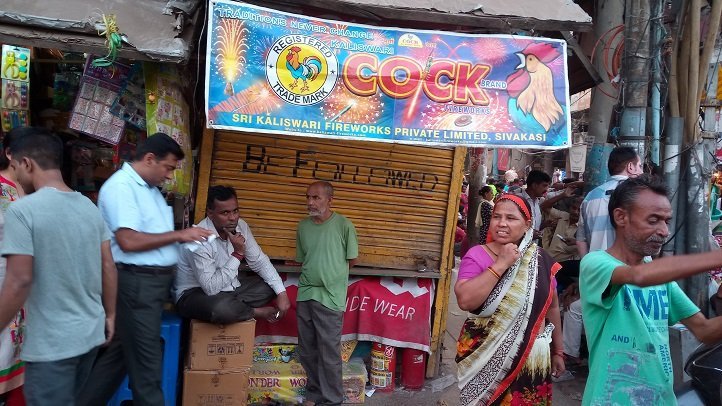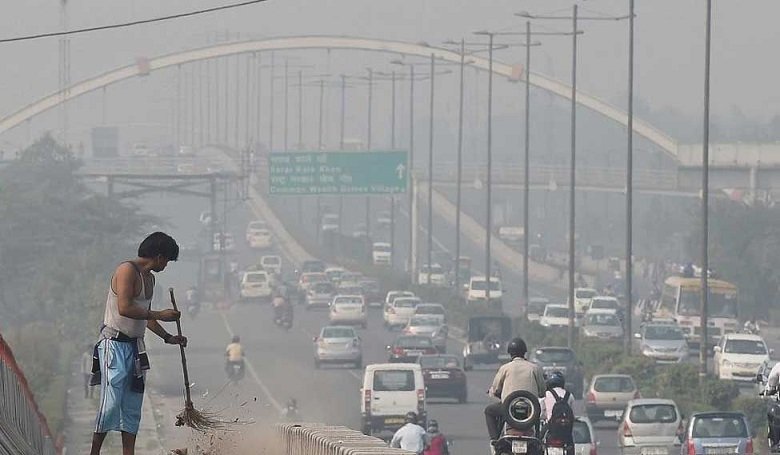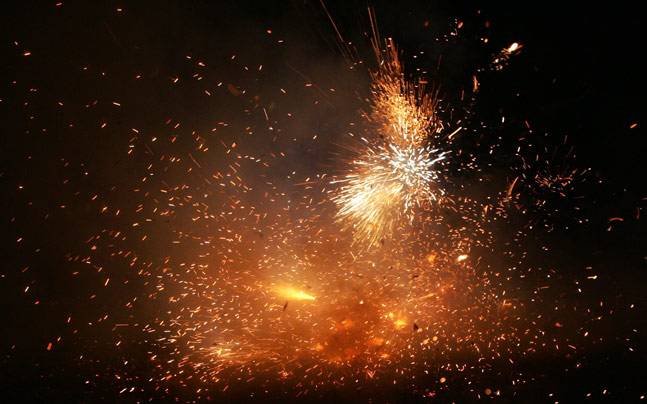To tackle Delhi’s alarming pollution levels, the Supreme Court had banned the sale of firecrackers in National Capital Region (NCR) a week before Diwali. The ban, in place till October 31, was cited as an “experiment” to examine whether banning crackers would have any effect on the pollution level in the region. The court, however, had allowed the bursting of firecrackers that had already been bought.
So what came out of this radical but controversial step? Zilch, it turns out, as per a report in The Hindu.
A study by Goa-based research group Urban Emissions has concluded that the ban had no effect on pollution in Delhi-NCR.

Here’s why:
The organisation had made some forecasts about pollution levels for October 19 (the day of Diwali), 20 and 21 for three scenarios:
- Ban leads to 0% reduction in crackers (which means all crackers were burnt)
- Ban leads to 25% reduction in crackers
- Ban leads to 50% reduction in crackers
The organisation assumed the entire stock of crackers to be 50 lakh kilos, a number provided by distributors in documents submitted to the Supreme Court, saying that in the five days of Diwali, 10 lakh kilos of firecrackers are used per day.
So how did the pollution level compare with the forecasts?
Turns out that the levels matched the 0% reduction-in-crackers-scenario. In other words, pollution levels in the region would be the same as predicted if all the crackers that remained unsold had been burst.
To understand how crackers contribute to pollution, here is a small break-up:
- Chemicals used such as magnesium and aluminium end up into PM2.5.
- Sulphur in the gunpowder used ends up into PM10.

What were the pollution levels this Diwali?
They were alarming, as per SAFAR (System of Air Quality and Weather Forecasting And Research). The organisation reported that the 24-hour rolling average for PM2.5 and PM10 were 154 and 256 micrograms per cubic metre respectively at around 11 pm on Diwali day.
The Centre for Science & Environment (CSE) said, “Despite the cracker ban, the 24-hour average level of PM 2.5 during Diwali and the morning after (12 pm-12 am, October 19-20) has been 397 microgrammes per cubic metre (mg/cu m). This is 6.6 times higher than prescribed standards and more than two times higher than the levels of pre-Diwali day when the 24-hour average was 184 microgramme per cu m.”
The online indicators of the pollution monitoring stations in the city glowed ‘red’, indicating a ‘very poor’ air quality as the volume of ultrafine particulates PM2.5 and PM10, which enter the respiratory system and manage to reach the bloodstream, sharply rose from around 7 pm.
But it is to be noted that Delhi’s air quality had entered the red zone a couple of days before Diwali itself.
However, as per the Central Pollution Control Board (CPCB), the air quality in Delhi on Diwali was better than last year. The Air Quality Index (AQI) value on Thursday was 319, putting it in “very poor” category, while the AQI last Diwali (October 30) had touched “severe” level after recording an index value of 431.

What does the study by Urban Emissions mean?
1. It could mean that the entire 100% stock of firecrackers was burnt on Diwali and Delhiites failed to honour the ban.
Forecasting models from @UrbanEmissions suggest 100 % of firecracker stock was burnt on Diwali & after in Delhi https://t.co/N11suyna72
— PriyankaPulla (@PriyankaPulla) October 25, 2017
But traders across Delhi are reporting a significant drop in the sale of firecrackers. In fact, Harjit Singh Chhabra, general secretary of Delhi’s Sadar Nishkarm Welfare Association (an association of traders of the busy Sadar Bazaar), told ScoopWhoop News that traders did not even sell 10% of their stock in the run-up to and on festival day.
2. As per Sarath Guttikunda, the director of Urban Emissions, it means the ban failed to deliver anything and showed that the government neglected other pollution sources, such as vehicular emissions. (Major factors contributing to Delhi’s toxic air include a mix of emission sources, such as industries, automobiles, generator sets, domestic fuel burning, roadside dust, construction activities, etc while in October, stubble burning in Punjab is a huge factor.)
3. Though CSE reported a significant drop in the volume of particulates PM2.5, PM10 and gaseous pollutant SO2 across Delhi on Diwali night, there is no way, as this column notes, that it can be credited to a drop in cracker bursting.

















